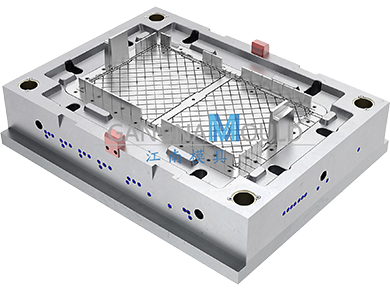Plate Tray Mold Production and Buyer Perspectives
These Plate Tray Molds are essential tools for producing plates, trays, and similar components used in food service, storage, electronics, and industrial applications. Buyers often look for moulds that provide precision, durability, and cost efficiency while allowing consistent part production. How can manufacturers ensure their moulds meet varying requirements for tray size, shape, and material? Proper design, material selection, and precision tooling are critical factors that influence buyer decisions and factory efficiency.

Plate Tray Mold Buyer Requirements and Considerations
Buyers evaluating tray moulds must consider production volume, cavity count, and part specifications. For high-volume operations, multi-cavity moulds reduce the per-unit cost but require a higher initial investment and specialized setup expertise. Buyers of industrial trays may prioritize structural strength and uniform wall thickness, whereas buyers of food-service trays may emphasize surface finish, color consistency, and cycle time efficiency. Understanding these differences allows buyers to select a mould that matches operational priorities and expected return on investment.
Plate Tray Mold Factory Production Metrics
Manufacturers producing plate tray moulds track cycle time, material usage, tooling longevity, and maintenance needs. Larger trays or complex designs often demand single-cavity moulds with longer cycles, while smaller trays achieve higher output with multi-cavity moulds. The choice of mould steel, runner system, and cavity layout directly affects production speed and defect rate. Compared to other plastic moulds, tray moulds require a balance between robustness and precision, ensuring each tray meets functional and aesthetic standards without excessive material waste.
Plate Tray Mold Material and Design Advances
Material selection impacts mould performance and product quality. Commonly used plastics include polypropylene, polystyrene, and polycarbonate, chosen for their durability, color retention, and water resistance. Modern tray moulds incorporate modular inserts, enabling production of multiple tray sizes or designs from one tool, reducing buyer costs and improving flexibility. Advanced cooling systems, precise cavity machining, and surface texturing enhance part release, maintain consistent wall thickness, and improve resistance to wear. These innovations support higher efficiency, lower scrap rates, and reliable production cycles.
Plate Tray Mold Comparison to Other Mould Types
Compared to packaging moulds or automotive moulds, tray moulds occupy an intermediate position. Packaging moulds focus on ultra-fast cycles and minimal material, while automotive moulds require extreme durability and complex geometries. Tray moulds must balance moderate cycle speed, structural integrity, and high-quality surface finish. Buyers evaluating moulds should examine cavity count, expected tooling life, and flexibility for part variations. Multi-cavity or modular designs often provide a cost-effective solution for manufacturers and buyers alike.
Plate Tray Mold Market Opportunities
Demand for tray and plate moulds continues to rise due to growth in food service, household, and industrial sectors. Buyers who consider design adaptability, material performance, and production efficiency can achieve cost savings and consistent output. Factories delivering precise, maintainable, and versatile moulds are better positioned to capture this growing market. Efficient moulds that reduce defects and extend service life also strengthen long-term relationships between buyers and manufacturers.
Conclusion
The Plate Tray Mold market offers strategic advantages for buyers seeking durable, efficient, and flexible mould solutions. Evaluating cycle efficiency, cavity design, material choice, and modular capabilities ensures consistent quality and cost-effectiveness.



 English
English русский
русский Español
Español Français
Français عربى
عربى 简体中文
简体中文




